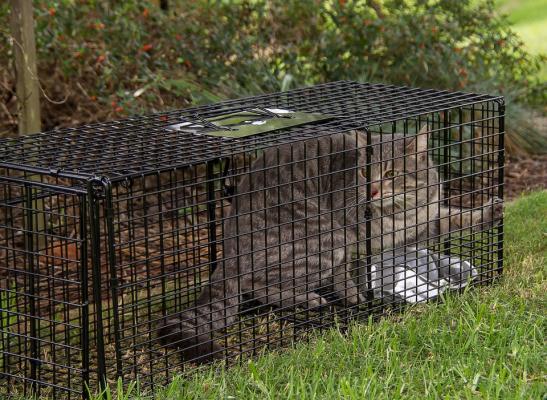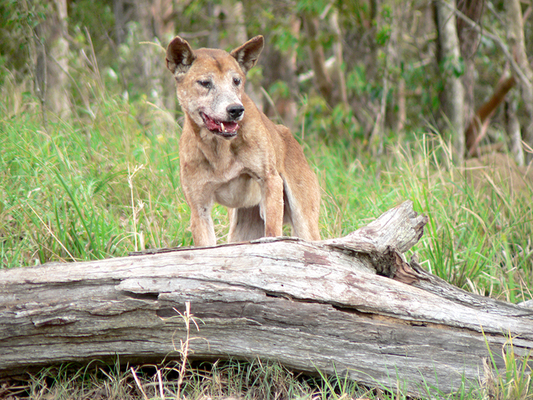Southern Downs councillors have endorsed a council submission to the Federal Government’s inquiry into the problem of feral and domestic cats in Australia, and that community consultation be undertaken on feral and domestic cat management strategies.
A council spokeswoman said the submission went to the August general council meeting and was “drafted by Council officers in consultation with a local native wildlife group”.
The spokeswoman said the submission addressed the following –
• Prevalence of feral and domestic cats in Australia
• The effectiveness of current legislative and regulatory approaches
• The efficacy (in terms of reducing the impact of cats), cost effectiveness and use of current and emerging methods and tools for controlling feral cats, including baiting, the establishment of feral cat-free areas using conservation fencing, gene drive technology
• Public awareness and education in relation to the feral and domestic cat problem
• Interaction between domestic cat ownership and the feral cat problem, and best practice approaches to the keeping of domestic cats in this regard
Councillor for Environmental, Waste, Sustainability, and Disaster Management Cameron Gow said councillors noted “the impact cats have on native wildlife and the importance of responsible pet ownership”.
“It’s no secret the impact that feral cats have on our natural environment,” Cr Gow said.
“But what is often left out of the conversation is the damage domestic cats can cause and how, if not responsibly cared for, they can contribute to the feral population.
“Cats can be great pets and we need to do what we can to make sure that their health and the companionship they can offer to cat owners is not at the expense of our unique biodiversity.”
The council spokeswoman said the SDRC applied for funding through the second round of the Australian Government’s Communities Combating Pest and Weed Impacts During Drought Program.
“The application was successful and $174,000 has been received by Council to deliver a cat management project through 2020/2021 and 2021/2022,” the spokeswoman said.
“In recognition of the increasing cat problem in the Southern Downs Region, Council is considering implementing cat management strategies through the project.
“These strategies may include compulsory micro-chipping, registration and de-sexing (unless you are a registered breeder) for domestic cat ownership.”
(BREAKOUT)
Exclusion fencing EOI
Also at their August general meeting councillors endorsed the criteria for an expression of interest-based (EOI) funding round as part of Council’s Australian Government funded exclusion fencing project.
“Council was successful in its application for one million dollars through round 1 of the Australian Government’s Communities Combating Pests and Weed Impacts During Drought Program, for the project ‘Exclusion fencing for a sustainable sheep and wool industry in the Southern Downs Region of Queensland’,” a council spokeswoman said.
“This is in addition to the $700,000 Council secured via round 3 of the Queensland Feral Pest initiative (QFPI3) and the $260,000 since secured through round 2 of the Australian Government’s Communities Combating Pests and Weed Impacts During Drought Program,” she said.
“Council’s successful round 1 project comprises the following components –
• Increase the subsidy of the funding for cluster fencing received via round 3 of the QFPI3
• Provide a landholder subsidy for exclusion fencing outside the established clusters
• Upgrade sections of the Darling Downs-Moreton Rabbit Board rabbit fence that forms part of the Karara and Silverdale Clusters to dog height,
• Capacity building activities for landholders
• Develop a monitoring system to evaluate the social, economic and environmental outcomes of the exclusion fencing in that area, and
• One aerial baiting campaign
“Council will administer the landholder subsidy for exclusion fencing outside the established clusters component of the project via an expression of interest process.
Councillor for Environmental, Waste, Sustainability and Disaster Management Cameron Gow said the council “anticipates there will be significant interest from landholders in accessing the subsidy, so it is important we have equitable criteria in place by which to allocate the funding”.
“The criteria state that to be eligible, applicants must be either currently running sheep, or demonstrate a plan to return to sheep in the future.
“This strategy is aimed at protecting and enhancing the viability of the sheep and wool industry in the Southern Downs.
“Sheep and wool production requires more labour inputs than cattle farming and the flow on effects to the local economy from more jobs is significant.
“Wild dogs have seen people move out of sheep and into cattle over the past 10 years, particularly in the Traprock region which is very well suited to sheep and wool production.
“Increasing the region’s flock generates economic benefits felt across the whole region.
“It is in everyone’s best interest to see sheep return to the Traprock.”
The council spokeswoman said a steering committee was established to guide the project.
“Chaired by Councillor Gow, it includes Council pest management and economic development officers, local landholders representing Cluster groups, the Southern Downs Region Wild Dog Management Working Group, and Biosecurity Queensland’s State Wild Dog Coordinator,” the said.
“Expressions of interest will be called by Council soon and assessed by the steering committee.”








